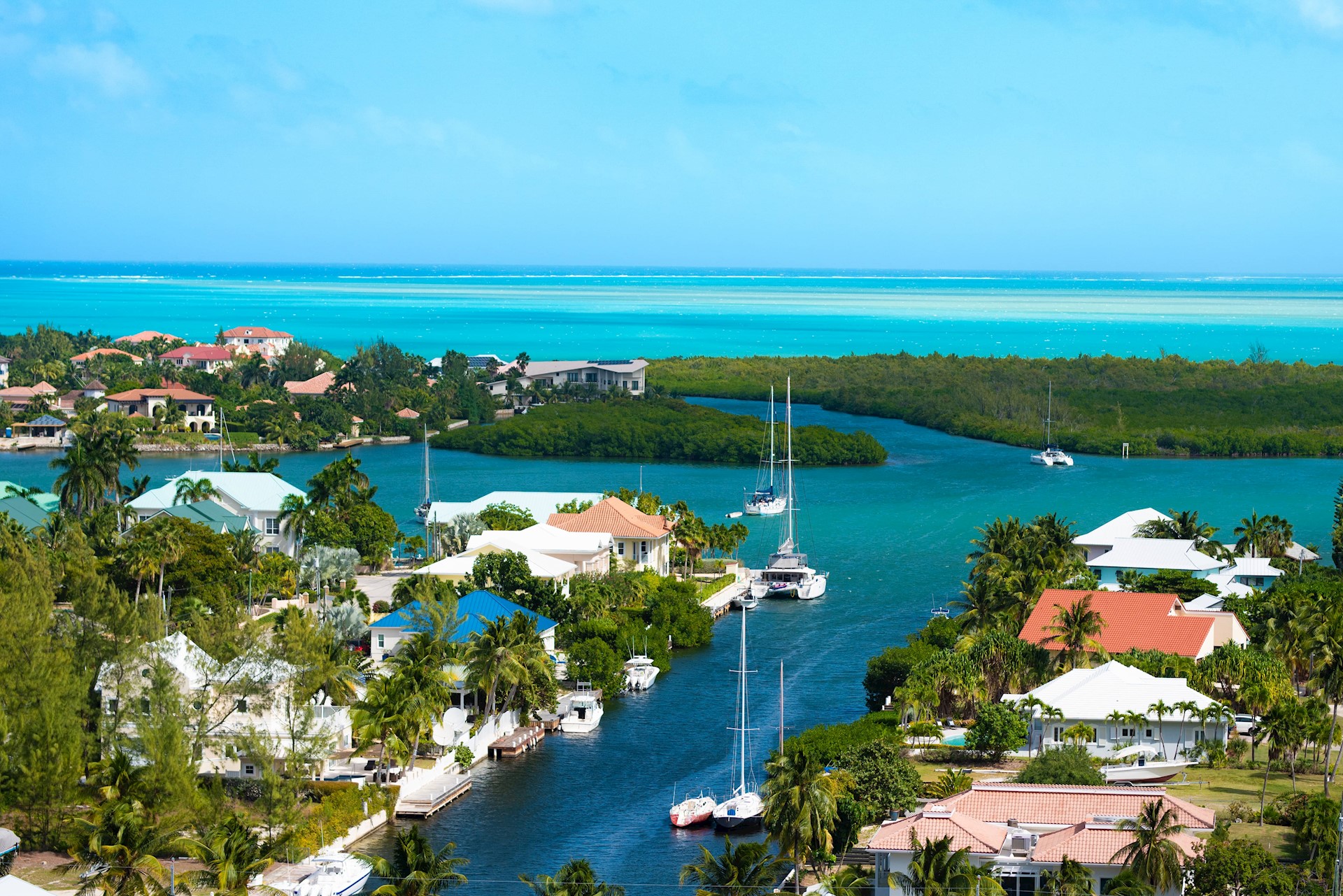
Cost of living in the Cayman Islands
12 Mar 2021

12 Mar 2021
Last updated April 2023
Living in a tropical paradise like the Cayman Islands is the aspiration for people looking to escape fast-paced urban lifestyles and cold climates. What often starts as a vacation quickly turns into the desire to live in the Cayman Islands full time. Determining how to fulfil that goal usually starts with research, such as learning how to buy real estate on Grand Cayman, and determining what it costs to live in the Cayman Islands.
Here are some general indicators on what it costs to live in the Cayman Islands. All prices are expressed in US dollars and were verified in April 2023. These prices will vary by service provider/vendor and market conditions, should be used as general indicators only, and are subject to change.
As in any market, real estate prices will vary according to location, property type, and prevailing economic conditions. Most people looking to relocate to the Cayman Islands dream of living on or near globally acclaimed Seven Mile Beach. There has been increasing demand for Grand Cayman properties for sale in the Seven Mile Beach corridor in recent years and ready supply of properties for sale has been contracting.
For those who prefer to rent instead of own property, the average rental price per month for an apartment in the Seven Mile Beach corridor is between US$2,800 and $6,100 (one-bedroom condo to three-bedroom condo). This area is a prime market area; in other parts of Grand Cayman, such as East End and North Side, property prices, for both sale and for rent, will be lower.
There are no annual property taxes in the Cayman Islands. A one-time stamp tax (land transfer fee) of seven and a half percent is charged on all property transactions (paid for by the purchaser) (source: CIREBA). There are no restrictions on foreign ownership of land in the Cayman Islands and no alien land-holding licenses.
Grocery stores in the Cayman Islands are modern and well stocked with local produce and seafood and an impressive array of international imports that impress discerning visitors from cosmopolitan centres. See the table below for a list of average prices for common expenses when living in the Cayman Islands.
Other prices that are often used as indicators for the cost of living are beer and movie tickets. A standard bottle of beer is priced between US$4.30 and $7.30 and a movie ticket ranges from $14 to $28.65 depending on theatre (standard or VIP) and time (matinee or evening) of the showing.
The team at Provenance Properties – the official Christie’s International Real Estate affiliate for the Cayman Islands – is another great resource to consult. They can assist potential residents with learning more about island life and the costs associated with (or missing from!) living in paradise. Contact us here.
|
Half gallon milk |
$4.50-7.91 |
|
One dozen eggs |
$8.04 |
|
One loaf of bread |
$3.28 |
|
Gasoline – one imperial gallon |
$6.95 |
|
Public bus ticket |
$2.50+ |
|
Car insurance for average mid-sized car per year |
$549-793 |
|
Taxi (from airport to Seven Mile Beach) |
$27 |
|
Ferry from Camana Bay to Kaibo (round trip per person) |
$30.50 |
|
Water (per 1,000 US gallons) |
$21.08 |
|
Electricity (per kWh) |
$0.30 |
|
Pest control (per quarter) |
$152.44 |
|
Property insurance (as percentage of property value) |
1.7% |
One of the first things people are usually delighted to learn is what they will not have to pay for when living in this sun-drenched British Overseas Territory – namely no corporate, income, capital gains, inheritance, property or sales (VAT) taxes. The prospect of living a tax-free life, not to mention saying goodbye to the time-consuming process of filing annual tax returns, is an enticing one.
In addition to the benefits of living in a tax-neutral jurisdiction, there are also other daily living costs common in other parts of the world that are largely missing in the Cayman Islands. One particular favourite for former city dwellers is the absence of paying to park. With the exception of modestly priced parking fees at the international airport, parking metres are not a common occurrence on Grand Cayman.
Other daily living costs that new residents moving from cold climates to the Cayman Islands no longer incur include winter wardrobes (save perhaps one coat and a few sweaters/jumpers to wear on a trip to see family and friends), winter tires, and snow ploughing and shovelling services.
“I didn’t fully appreciate how much I was spending on those goods and services until I moved to Grand Cayman,” noted a new resident. “It’s a much simpler lifestyle here and due to fewer opportunities for impulse shopping, we find we tend to spend less on household items.”
Despite these savings, the Cayman Islands does have a reputation for being an expensive place to live, in part due to the local currency, which is permanently pegged at CI$1 equal to US$1.20. Visitors and new residents can find the exchange rate makes services such as restaurant dining more expensive. Further, the cost of importing items to a small island population also contributes to the perceived high cost of living, which can earn the Cayman Islands and, indeed, most other islands in the Caribbean a reputation for being expensive.
Infographic sources: